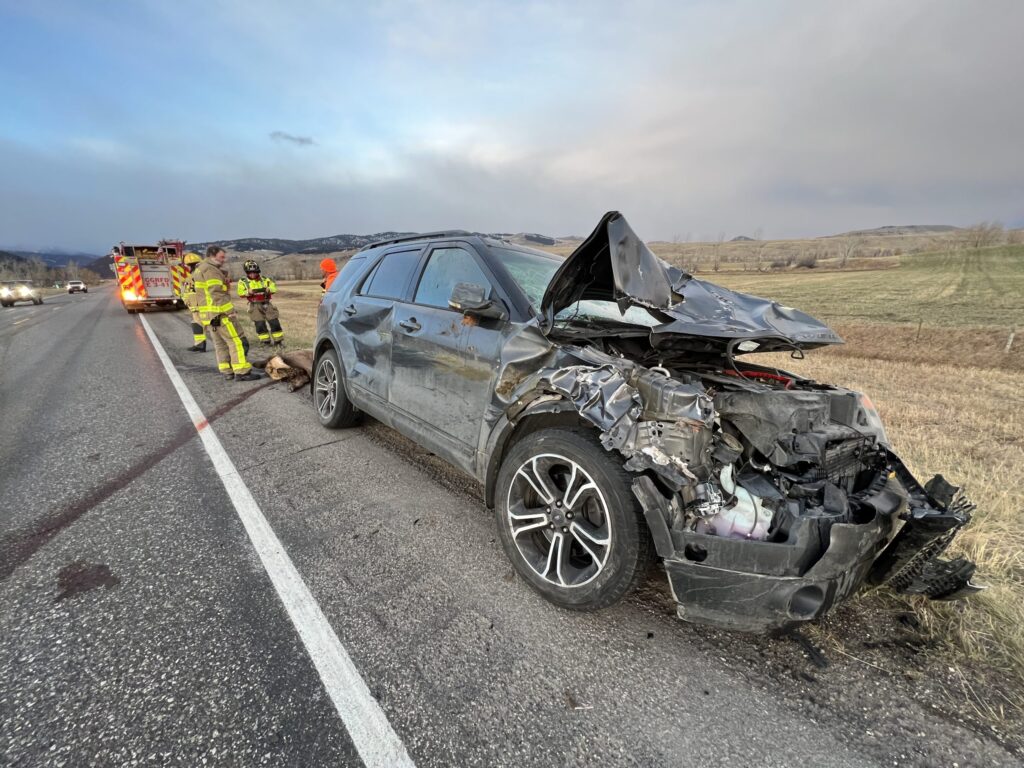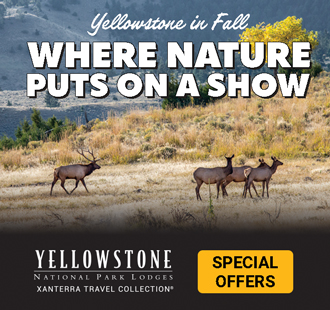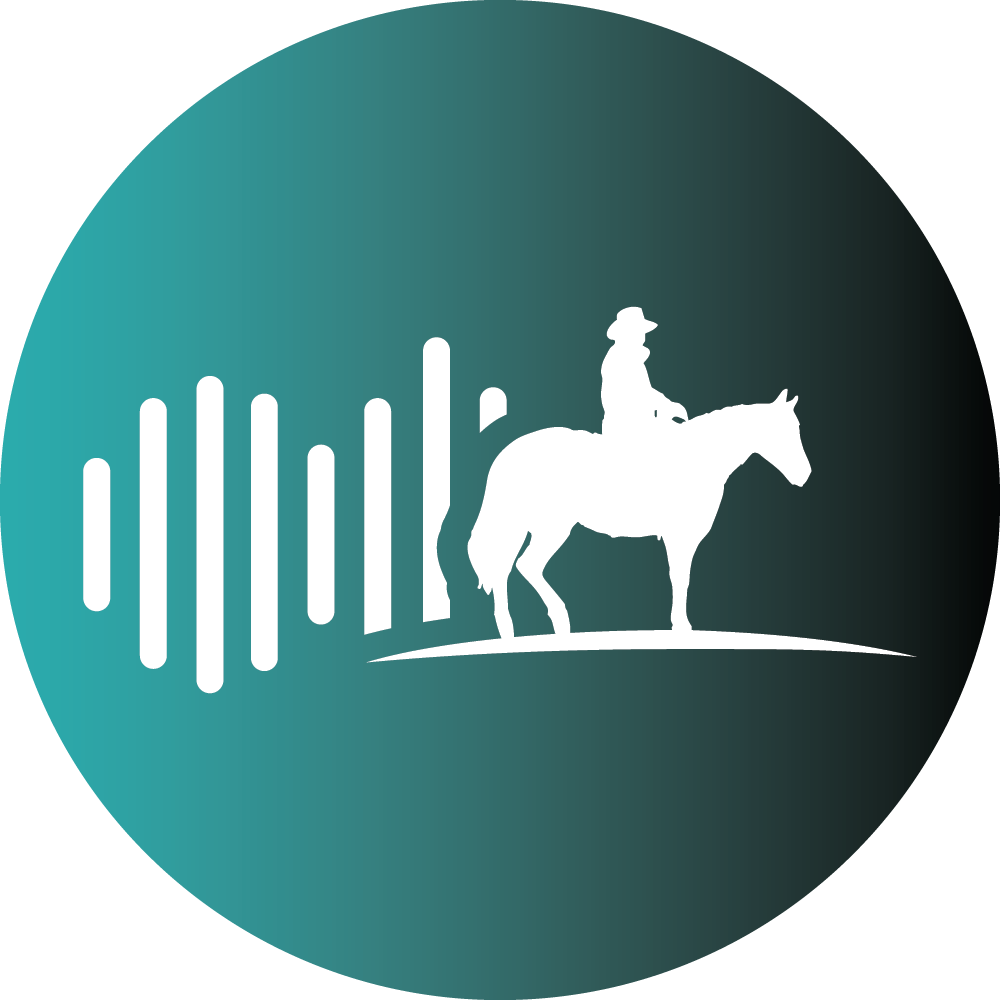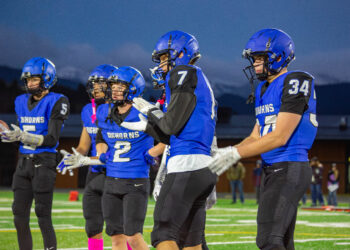By Benjamin Alva Polley EBS CONTRIBUTOR
Each fall, as the seasons change, more animals become active. Bears seek extra calories to prepare for hibernation, while elk, deer, moose and bighorn sheep enter mating season, often less wary of roads. Many wildlife mothers encourage their young to strike out on their own in autumn. Migrating wildlife descend from high elevations to valleys in search of food, often leading to increased wildlife-vehicle collisions, many of them at dawn and dusk. Over the past two months, wildlife-vehicle collisions on U.S. 191 killed four grizzlies, one black bear, two horses, and a mule—and that’s not even counting elk, deer or moose.
“In terms of wildlife-vehicle collisions, we always see a spike in October and November,” said Elizabeth Fairbank, road ecologist for the Center for Large Landscape Conservation. “Those are typically the highest months in terms of wildlife vehicle conflict.”
According to the Western Transportation Institute, one to two million collisions happen annually between vehicles and large animals, resulting in approximately 29,000 human injuries and an estimated 200 fatalities. The cost generated is around $8 billion. In Montana alone, wildlife-vehicle collisions involving deer, elk and moose between 2008 and 2017 resulted in annual costs exceeding $120 million. According to State Farm Insurance, Montana ranks second in the nation in the likelihood that a vehicle may crash into a large animal.

U.S. 191 is the primary thoroughfare connecting the high-density human populations of Gallatin Valley to Big Sky and West Yellowstone. This route hosts two hotspots for wildlife-vehicle collisions: the mouth of Gallatin Canyon and the junction of U.S. 191 and Montana Highway 64 (Lone Mountain Trail). Between 2008 and 2022, 2,625 whitetail deer, 625 mule deer and 312 elk were killed by vehicles in Gallatin County, making these priority sites for conservationists and road experts due to the high number of wildlife-vehicle collisions.
EBS previously reported that Montana Fish, Wildlife and Parks spends up to $30,000 a year addressing wildlife conflicts around Bozeman. Increased human migration intensifies collision frequency.
“Human development disrupts wildlife habitats and changes animal movements. To mitigate these effects, we should plan locally for undeveloped, connected areas guided by a landscape-scale vision,” wrote Kylie Paul, a road ecologist with CLLC, in an email to EBS. “Community advocacy is crucial in persuading leaders to support wildlife conservation efforts. As roads cut through habitats and driver numbers increase, wildlife-vehicle crashes rise. Placing crossings at critical points helps prevent collisions, and these projects are more likely to be adopted with strong public backing.”
In addition to the season’s increased wildlife activity, autumn brings low-angled sunlight and road glare. And the Gallatin Canyon also poses an additional hazard: a major thoroughfare for tourists traveling to the park, drivers may lose focus on the scenic stretches after winding through the canyon.
“The top hotspot on 191 is just south of Gallatin Gateway to Spanish Creek, partly due to a resident elk herd,” Fairbank said. One wildlife photographer counted 18 dead elk in one year along this corridor.
A 2023 poll ranked wildlife crossings and barriers as top transportation priorities among Montanans.
“There’s always an appetite to do something quick and relatively inexpensive and easy to implement. Unfortunately, solutions like signs just aren’t particularly effective at changing driver behavior or reducing collisions,” said Fairbank.
CLLC, aiming to mitigate collisions worldwide and connect wildlife habitats, works to reduce wildlife-vehicle collisions globally by studying ecological connectivity. It is working with state transportation officials to obtain funding for a wildlife crossing bridge over U.S. 191. The project advanced in part due to protected private land bordering the road. A $350 million federal pilot grant is available for all crossings, but demand outstrips the funds fivefold.
Major collision reduction—80-90%—requires overpasses, underpasses and fencing to steer animals to safe crossings, said Fairbanks. Such solutions are costly and depend on preserved habitat on both sides.
“We don’t want to invest in expensive infrastructure for wildlife in a place that might not have habitat in 50-70 years,” she said. “There needs to be public support for any of these projects to move forward. So, regardless of funding or protected land on either side of the road, these projects won’t get done in places where people aren’t asking for them. If people want to see things like this happen, they need to be vocal about it.”
Benjamin Alva Polley is a place-based storyteller. His words have been published in Rolling Stone, Esquire, Field & Stream, The Guardian, Men’s Journal, Outside, Popular Science, Sierra, and other publications, and can be seen on his website.














